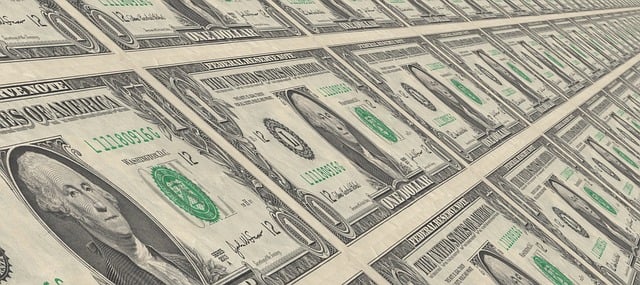
Attracting Foreign Capital discover how different elements influence exchange rates and how making strategic trading choices can help you take advantage of opportunities in the forex market. Staying updated allows you to manage market swings and make more informed trading decisions.
Grasping what affects exchange rates is essential for anyone participating in the forex market or handling foreign currencies. These influences can lead to shifts in currency values by Foreign Capital, affecting international commerce, investment decisions, and overall economic health. Here are five major factors that determine exchange rate movements:
Read more about How to earn money in online
Read more about Higher returns attract
Attracting Foreign Capital interest rates are crucial in influencing currency markets. Set by central banks, they determine the return on holding a currency or the cost of borrowing it. When interest rates rise, a currency often appreciates because higher returns attract foreign capital. For instance, Attracting Foreign Capital when the US Federal Reserve increases rates, the US dollar typically strengthens compared to other currencies. On the other hand, lower interest rates can lead to depreciation as investors move their funds to seek higher yields elsewhere.
Attracting Foreign Capital interest rates also impact domestic consumer and business spending. Elevated rates can reduce borrowing and spending, slowing economic growth, yet make the currency more appealing to foreign investors seeking higher fixed-income returns. This can create a situation where the economy slows but the currency gains strength due to foreign investment inflows. Conversely, lower rates encourage borrowing and expenditure, stimulating growth but potentially weakening the currency as capital flows abroad in search of better returns.
Even expectations of future interest rate adjustments can affect currency values immediately. If investors anticipate an upcoming rate hike, the currency may appreciate in advance. This effect is common in forex markets, where speculation significantly influences current exchange rates.
Inflation levels are closely monitored by central banks, which adjust interest rates to maintain price stability, usually around 2%. Lower inflation often strengthens a currency because it enhances purchasing power. A currency like the US dollar can benefit as goods become cheaper and more attractive to foreign investors. However, the relationship between inflation and currency value is nuanced, and extreme situations like deflation may produce different outcomes.
Higher inflation tends to reduce a currency’s value by eroding purchasing power and discouraging investment. Significant inflation is particularly concerning because it can raise borrowing costs and slow growth. Yet, this relationship is not always linear; global economic conditions, relative inflation rates between countries, and other macroeconomic factors can influence the outcome. Moderate inflation may sometimes stimulate spending and investment, while high inflation’s negative impact might be offset by robust growth or attractive interest rates.
Unemployment is another key factor affecting currency strength. Central banks aim for low unemployment to sustain economic stability. High unemployment can weaken a currency as it signals economic challenges and reduces investor confidence. When unemployment rises, consumer spending often declines, slowing overall economic activity and creating a negative feedback loop that may further weaken the currency.
Conversely, a strong labor market can enhance a currency’s value by reflecting economic stability and growth. Low unemployment usually correlates with increased consumer spending, driving economic expansion. Additionally, rising wages boost confidence and consumption, supporting a positive economic cycle. Countries with low unemployment often see higher domestic demand and production, Attracting Foreign Capital investment and strengthening their currency. The link between unemployment and currency is complex and closely tied to inflation and other economic indicators, requiring careful policy balancing.
A nation’s economic performance, typically measured by GDP, has a significant effect on currency demand. Strong GDP growth signals a healthy economy, drawing foreign investment and increasing currency value. A thriving export sector also contributes by bringing in foreign currency, which strengthens the domestic currency. For example, countries with high export volumes experience steady demand for their currency as international buyers need it to pay for goods.
Weak economic performance, characterized by slow GDP growth and a struggling export sector, can lead to currency depreciation. During the 2008 financial crisis, countries with stronger fundamentals and healthier trade balances maintained more stable currencies than weaker economies. A nation’s ability to produce and sell goods globally is essential for maintaining strong exchange rates and economic resilience.
Political stability is a major factor in currency valuation. Political uncertainty or geopolitical tensions can reduce a currency’s value due to increased risk and investor hesitation. Political turmoil can also affect trade relationships, potentially harming exports. Countries experiencing instability often see capital outflows, weakening their currency. For instance, the Israeli shekel has fluctuated due to regional conflicts. In contrast, the Swiss franc demonstrates how stability can enhance currency strength. Switzerland’s long-term neutrality and reliable governance make the franc a safe-haven, often appreciating during global crises. This illustrates that political stability can sometimes outweigh other economic factors in determining a currency’s value.
Exchange rates indicate the value of one currency relative to another and are determined by the forces of supply and demand in the foreign exchange market. For instance, if the USD/EUR rate is 1.21, it means one US dollar is equal to 1.21 euros. These rates are constantly shifting due to economic indicators, investor sentiment, geopolitical developments, and other influences.
Exchange rates can vary continuously, often minute by minute, as trading occurs around the clock in global forex markets. Economic reports, central bank actions, monetary policies, geopolitical tensions, and market speculation can all trigger rapid changes in currency values.
To profit from forex, traders buy a currency at a lower price and sell it when its value rises. Spot forex trading allows participants to act on price movements instantly, providing immediate access to current market data. This enables traders to capitalize on swift changes in rates and make decisions based on up-to-date economic information and trends.
With real-time market insights, traders can react quickly to fluctuations, optimizing strategies for potential gains while limiting exposure to losses. They can profit in both rising and falling markets by taking long (buy) or short (sell) positions. Effective forex trading requires understanding market dynamics, monitoring economic indicators, and applying sound risk management techniques. Using leverage can magnify returns but also increases the risk of substantial loss.
Grasping the elements that impact currency values is crucial for anyone trading forex or handling foreign money. Exchange rates are shaped by a mix of interest rates, inflation, employment figures, economic growth, and political conditions. By keeping track of these factors and staying informed about global developments, traders can navigate the forex market more effectively and make informed decisions, potentially earning from currency movements while managing risks responsibly.
When significant fluctuations occur in the exchange rates of major industrial nations, two main questions arise. First, how do these fluctuations affect key economic variables both domestically and internationally, such as current account balances, production, prices, and interest rates? Second, what policy measures, if any, should be taken in response? These questions are especially relevant given the large swings in exchange rates during the floating-rate period, particularly over the last five or six years. For example, between March 1985 and April 1986, the nominal effective exchange rate of the U.S. dollar fell by 23 percent, while the Japanese yen rose 47 percent against the dollar. Additionally, the September 1985 decision by the five largest industrial nations to promote changes in their exchange rates has heightened the need to understand the mechanisms involved and their economic consequences.
This paper’s scope is limited in three key respects. First, it focuses exclusively on major industrial countries with floating exchange rates. Addressing the issues faced by smaller countries with floating rates or countries with less flexible or fixed exchange rate systems would require a different methodology; most empirical studies available concern only the largest economies. Second, the paper does not address very short-term exchange rate fluctuations that reverse within a few months, nor does it consider problems arising from persistent long-term misalignments. While some long-term issues are touched on, the primary focus is on the impact of exchange rate changes during the first few years following a policy action or other shock. This aligns with the paper’s empirical and policy-oriented approach. Third, the paper does not attempt to determine whether exchange rates are misaligned. While evaluating whether a currency is overvalued or undervalued is essential for deciding on policy responses, making such judgments falls outside the scope of this study.
Although the questions addressed here are central to many policy debates, answering them poses significant empirical and methodological challenges. A primary difficulty is that exchange rates react to many factors, including policy actions and private market behavior. The impact of exchange rate changes on the global economy depends heavily on their underlying causes, which are often difficult to identify precisely. Additionally, the implications of exchange rate movements for national policy options depend on many variables, such as the causes of the changes, the structure of trade and financial connections between countries, the formation of expectations, and whether exchange rates were initially perceived as misaligned. The paper discusses these and other challenges, but it does not aim to provide a systematic analysis of what determines exchange rate changes. It briefly outlines the ways in which exchange rates are believed to respond to monetary or fiscal policies, or shifts in private asset preferences, without evaluating the empirical importance or stability of these factors.




